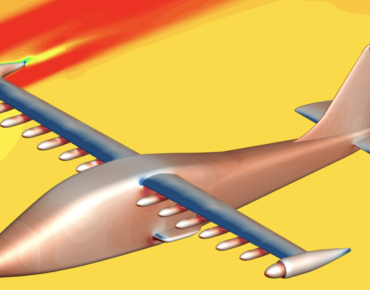NASA Leverages HPC to Model an All-Electric Airplane

Source: NASA
NASA is expanding its HPC-driven aeronautical research with an all-electric experimental aircraft dubbed the X-57 “Maxwell,” using its Pleiades HPC cluster to model and simulate critical aerodynamic flight characteristics.
So far, the X-57 exists only as a visualization rendered by a supercomputer. The experimental flying machine includes 14 battery-powered motors and propellers. A dozen would be used for takeoffs and landings while two wingtip engines would provide propulsion and stability during level flight.
NASA’s network of aeronautical researchers is running simulations on the Pleiades cluster to determine the flight characteristics of an all-electric aircraft.
The Pleiades simulations will be used by NASA engineers to create accurate computer models of aerodynamic performance. Those models will then be incorporated into the X-57 flight simulator, a key tool for aviation research.
“The aerodynamic model ensures that [the X-57’s] flight simulator performs in a manner consistent with actual flight and lets pilots test emergency scenarios and safe recovery measures,” NASA said.
Read the full story here at sister website HPCwire.
Related
George Leopold has written about science and technology for more than 30 years, focusing on electronics and aerospace technology. He previously served as executive editor of Electronic Engineering Times. Leopold is the author of "Calculated Risk: The Supersonic Life and Times of Gus Grissom" (Purdue University Press, 2016).











